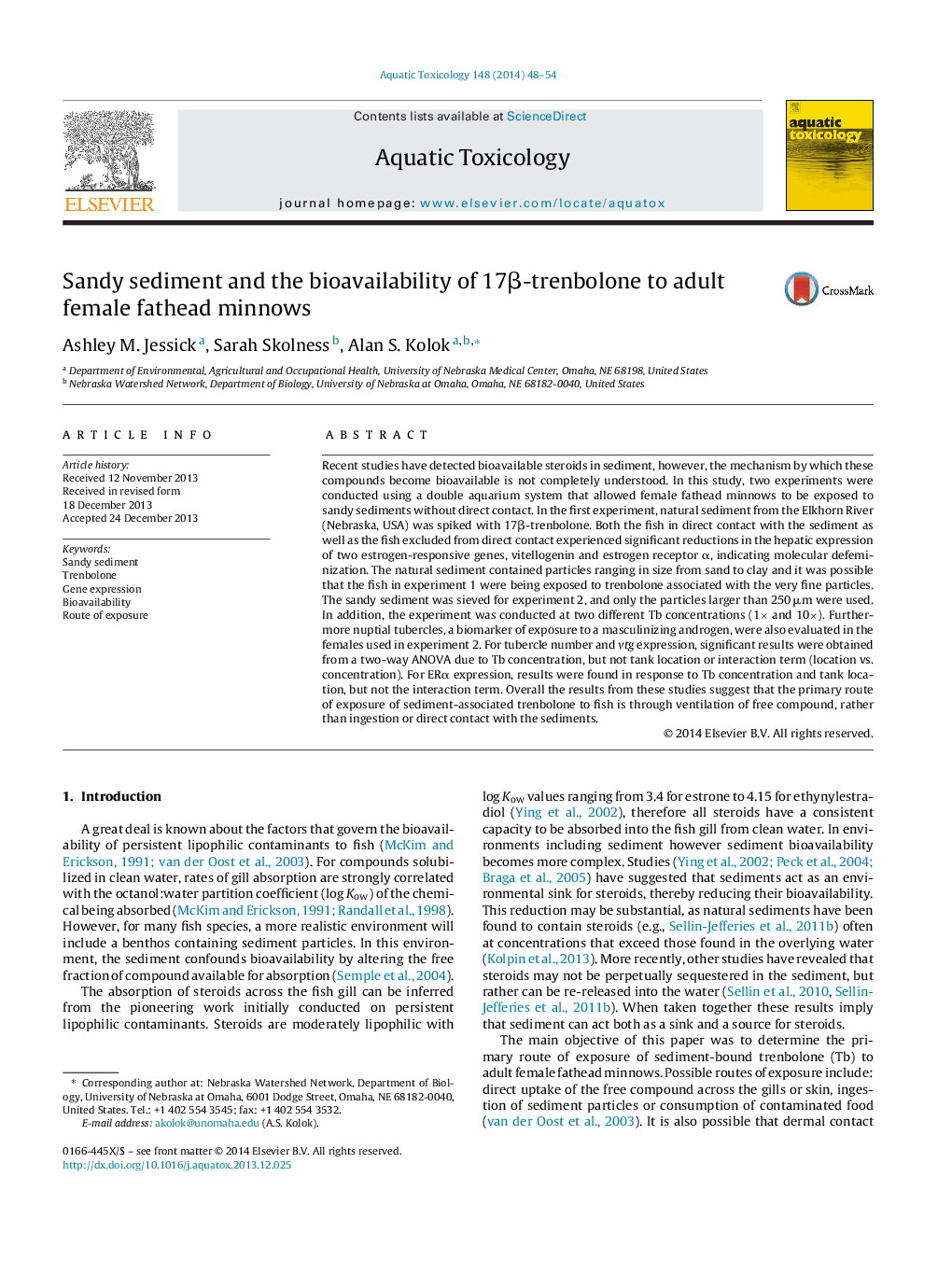| Article ID | Journal | Published Year | Pages | File Type |
|---|---|---|---|---|
| 4529373 | Aquatic Toxicology | 2014 | 7 Pages |
•A double aquarium system was used to evaluate route of steroid exposure to fish.•Sediment contact, sediment ingestion and ventilation were evaluated.•Exposures caused alterations in the expression of two estrogen responsive genes.•Exposures caused masculinization as indicated by nuptial tubercles on females.•Ventilation is the primary route of exposure of trenbolone to fathead minnows.
Recent studies have detected bioavailable steroids in sediment, however, the mechanism by which these compounds become bioavailable is not completely understood. In this study, two experiments were conducted using a double aquarium system that allowed female fathead minnows to be exposed to sandy sediments without direct contact. In the first experiment, natural sediment from the Elkhorn River (Nebraska, USA) was spiked with 17β-trenbolone. Both the fish in direct contact with the sediment as well as the fish excluded from direct contact experienced significant reductions in the hepatic expression of two estrogen-responsive genes, vitellogenin and estrogen receptor α, indicating molecular defeminization. The natural sediment contained particles ranging in size from sand to clay and it was possible that the fish in experiment 1 were being exposed to trenbolone associated with the very fine particles. The sandy sediment was sieved for experiment 2, and only the particles larger than 250 μm were used. In addition, the experiment was conducted at two different Tb concentrations (1× and 10×). Furthermore nuptial tubercles, a biomarker of exposure to a masculinizing androgen, were also evaluated in the females used in experiment 2. For tubercle number and vtg expression, significant results were obtained from a two-way ANOVA due to Tb concentration, but not tank location or interaction term (location vs. concentration). For ERα expression, results were found in response to Tb concentration and tank location, but not the interaction term. Overall the results from these studies suggest that the primary route of exposure of sediment-associated trenbolone to fish is through ventilation of free compound, rather than ingestion or direct contact with the sediments.
